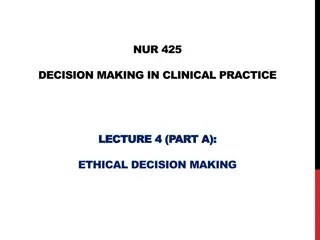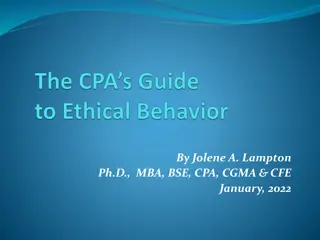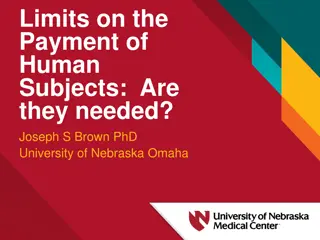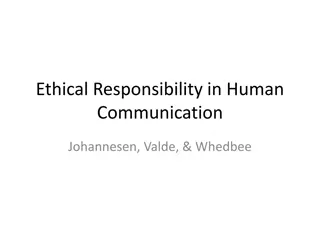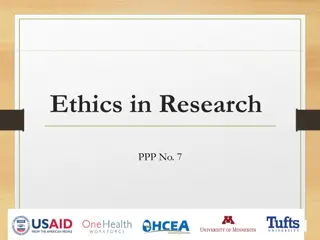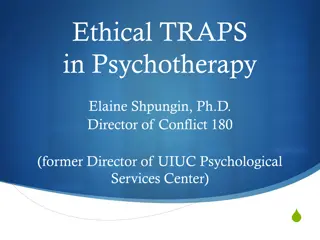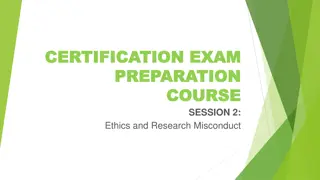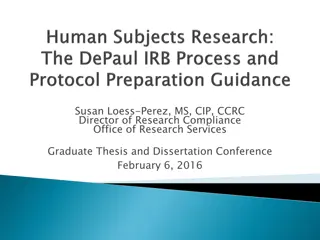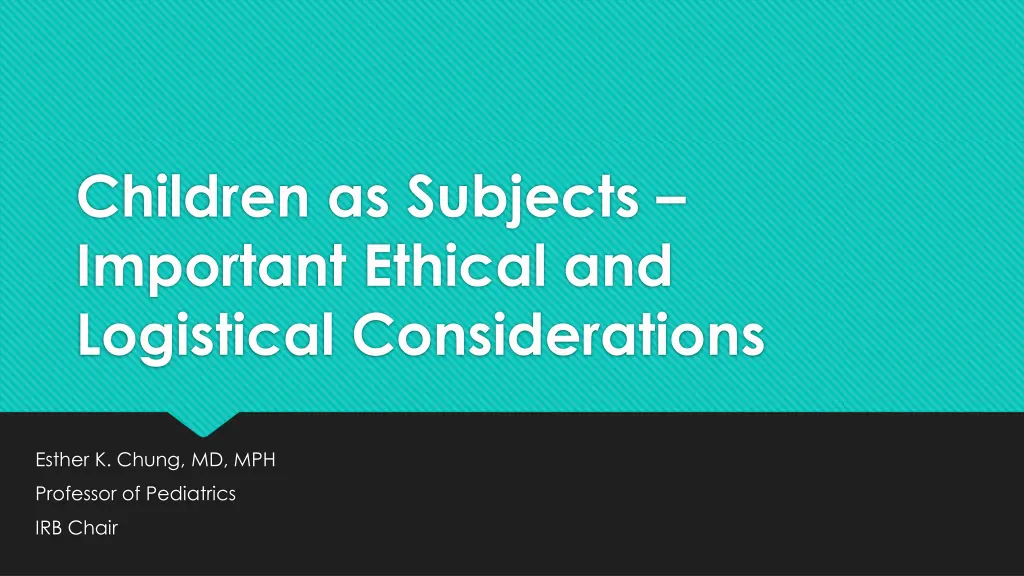
Important Ethical Considerations for Research Involving Children
Explore the ethical and logistical considerations when conducting research involving children. Understand the vulnerability of children as research subjects, the importance of equitable inclusion, the requirements for child assent, and federal regulations providing additional protections. Delve into definitions, psychosocial developmental stages, and the National Commission's guidelines from the Belmont Report.
Download Presentation

Please find below an Image/Link to download the presentation.
The content on the website is provided AS IS for your information and personal use only. It may not be sold, licensed, or shared on other websites without obtaining consent from the author. If you encounter any issues during the download, it is possible that the publisher has removed the file from their server.
You are allowed to download the files provided on this website for personal or commercial use, subject to the condition that they are used lawfully. All files are the property of their respective owners.
The content on the website is provided AS IS for your information and personal use only. It may not be sold, licensed, or shared on other websites without obtaining consent from the author.
E N D
Presentation Transcript
Children as Subjects Important Ethical and Logistical Considerations Esther K. Chung, MD, MPH Professor of Pediatrics IRB Chair
Children as a Vulnerable Population Subject to coercion and undue influence Potential population of convenience Minimizing risk and distress Understanding developmental stages Understanding pediatric ethical, clinical and psychosocial issues
Definitions Preterm newborn infants Term newborn infants (0 to 27 days) Infants and toddlers (28 days to 23 months) Children (2 to 11 years) Adolescents (12 to 16-18 years (dependent on region)) Dr. Chambers talk
Psychosocial and cognitive development
Inclusion of Children Equitable selection of subjects to ensure equitable distribution of research benefits, on the one hand Protection of vulnerable subjects, on the other Policies re: women of childbearing age 1977, 1993 In turn, 1998, NIH encouraged the enrollment of children in research Emphasis on inclusion, understanding that certain studies justifiably exclude children
National Commission in the Belmont Report Respect for persons requires the opportunity to choose to the extent they are able child assent (ages 7-17) OHR-8C Child assent = affirmative agreement and not passive resignation Parental authority: if research may directly benefit child or if the risks of participation are equivalent to the normal risks of childhood (minimal risk)
Federal Regulations Subpart D OHR-26 Subpart D Additional Protections for Children Involved as Subjects in Research. 46.401-46.409 Research not involving greater than minimal risk. Research involving greater than minimal risk but presenting the prospect of direct benefit to the individual subjects. Research involving greater than minimal risk and no prospect of direct benefit to individual subjects, but likely to yield generalizable knowledge about the subject s disorder or condition. Research not otherwise approvable which presents an opportunity to understand, prevent, or alleviate a serious problem affecting the health or welfare of children.
Logistical Considerations Researchers training in pediatrics, including evaluation and management of adverse events Minimize number of participants and procedures, consistent with good study design Minimize discomfort and distress Addressing age-appropriate needs: pediatric procedures, play equipment and activities, food appropriate for age, familiar and comfortable environment Blood sampling consider maximal number of attempts, 3 ml/kg in a 8-week period OR 0.8 ml (Wayne State U) to 3 ml/kg per blood draw up to 50 ml (OHRP)
References Bakert EA and Amdur RJ. Institutional Review Board: Management and Function. Sudbury, MA: Jones and Bartlett Publishers, 2006. The Food and Drug Administration. Guidance for Industry: E11 Clinical Investigation of Medicinal Products in the Pediatric Population, 2000. https://www.fda.gov/downloads/drugs/guidancecomplianceregulatoryinformation/guidances /ucm073143.pdf Sanders LM, Federico S, Klass P et al. Literacy and Child Health: A Systematic Review. Arch Pediatr Adolesc Med. 2009;163(2):131-140. doi:10.1001/archpediatrics.2008.539 Office of Human Research Protections. https://www.hhs.gov/ohrp/regulations-and- policy/guidance/faq/children-research/index.html World Health Organization. Blood sample volumes in child health research: review of safe limits. http://www.who.int/bulletin/volumes/89/1/BLT-10-080010-table-T2.html


